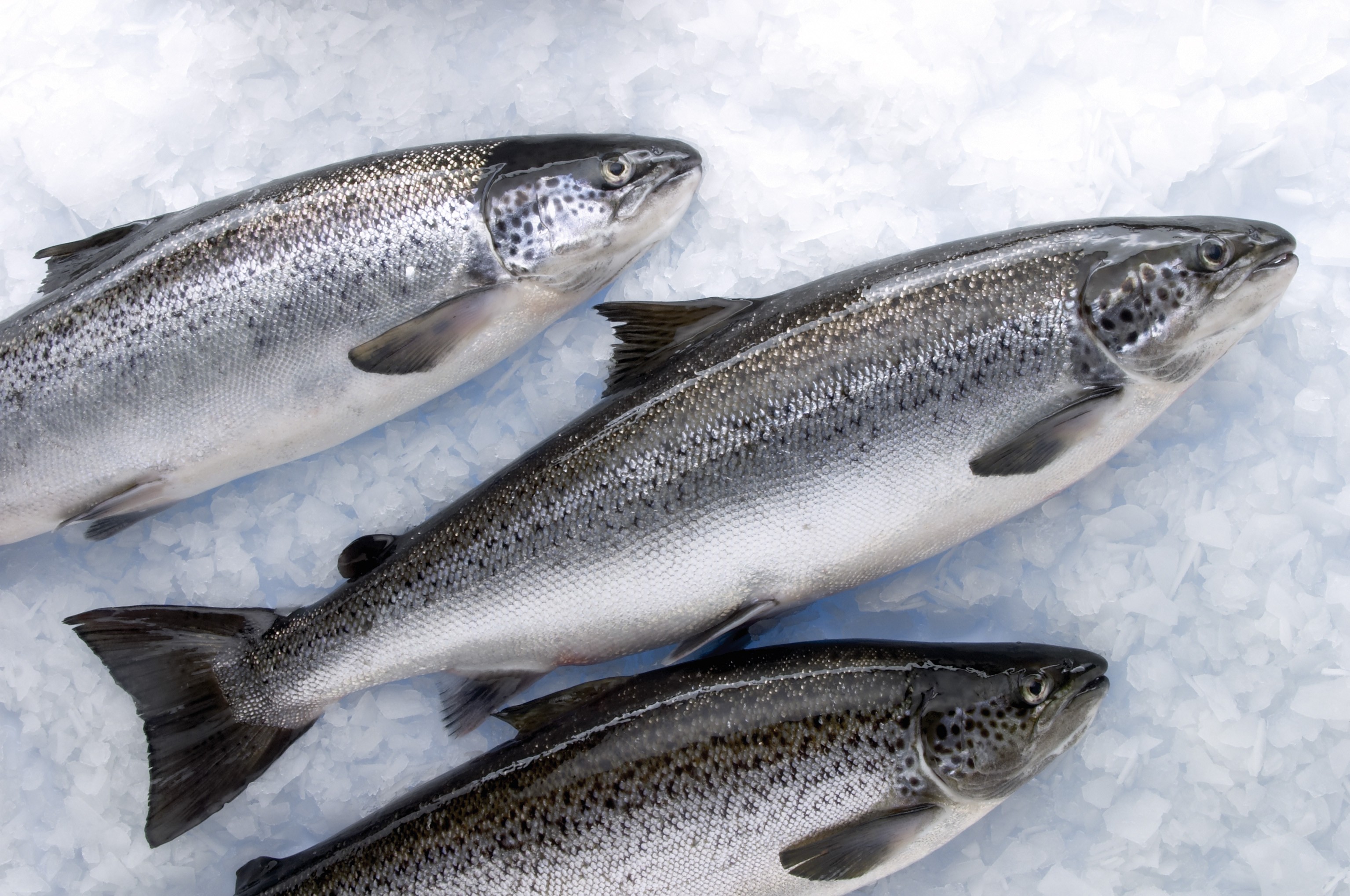Selective breeding
In a joint project with Salmon Enterprises of Tasmania (Saltas), we're working to enhance a selective breeding program for the Atlantic salmon farming industry. Saltas is an industry co-operative and is the leading hatchery for improved seed stock for the industry. The entire industry is valued at $500 million a year.

The selective breeding program is using targeted matings to concentrate the following key performance traits in Tasmania's Atlantic salmon stocks:
- Growth
- Late maturation
- Resistance to amoebic gill disease
- Carcase quality.
Three age groups of fish are being grown simultaneously and about 180 salmon families (4000-5000 pedigreed individuals) are being produced each year.
The three-year breeding and selection cycle includes spawning, tagging and DNA fingerprinting, monitoring procedures in freshwater and seawater, and parent selection.
Analysing performance to chose the next generation of salmon
Our analysis examines the performance of individuals, siblings, parents and more distant relatives to determine which fish to use to breed the next generation. An economic weighting is given to each selection trait that helps to achieve the best overall outcome for growers. Each year the performance of all the fish will be analysed to calculate 'estimated breeding values' for the key performance traits.

More than $20 million in benefits, with more to come
The partnership is delivering:
- Tens of thousands of pedigreed Atlantic salmon with performance records and estimates of their genetic values for key commercial traits
- Systems for capturing, storing and processing hundreds of thousands of pedigree and performance measurements
- Workplans, tools and protocols for tagging, genotyping and performance measurement.
The project is bringing significant benefits in growth and disease resistance, with commercial stock now improved progeny from the program started in 2005. Subsequent benefits will be repeated in waves, with greater that ten per cent gains in performance every three-year generation.
Selective breeding
In a joint project with Salmon Enterprises of Tasmania (Saltas), we're working to enhance a selective breeding program for the Atlantic salmon farming industry. Saltas is an industry co-operative and is the leading hatchery for improved seed stock for the industry. The entire industry is valued at $500 million a year.
The selective breeding program is using targeted matings to concentrate the following key performance traits in Tasmania's Atlantic salmon stocks:
- Growth
- Late maturation
- Resistance to amoebic gill disease
- Carcase quality.
Three age groups of fish are being grown simultaneously and about 180 salmon families (4000-5000 pedigreed individuals) are being produced each year.
The three-year breeding and selection cycle includes spawning, tagging and DNA fingerprinting, monitoring procedures in freshwater and seawater, and parent selection.
Analysing performance to chose the next generation of salmon
Our analysis examines the performance of individuals, siblings, parents and more distant relatives to determine which fish to use to breed the next generation. An economic weighting is given to each selection trait that helps to achieve the best overall outcome for growers. Each year the performance of all the fish will be analysed to calculate 'estimated breeding values' for the key performance traits.
More than $20 million in benefits, with more to come
The partnership is delivering:
- Tens of thousands of pedigreed Atlantic salmon with performance records and estimates of their genetic values for key commercial traits
- Systems for capturing, storing and processing hundreds of thousands of pedigree and performance measurements
- Workplans, tools and protocols for tagging, genotyping and performance measurement.
The project is bringing significant benefits in growth and disease resistance, with commercial stock now improved progeny from the program started in 2005. Subsequent benefits will be repeated in waves, with greater that ten per cent gains in performance every three-year generation.
